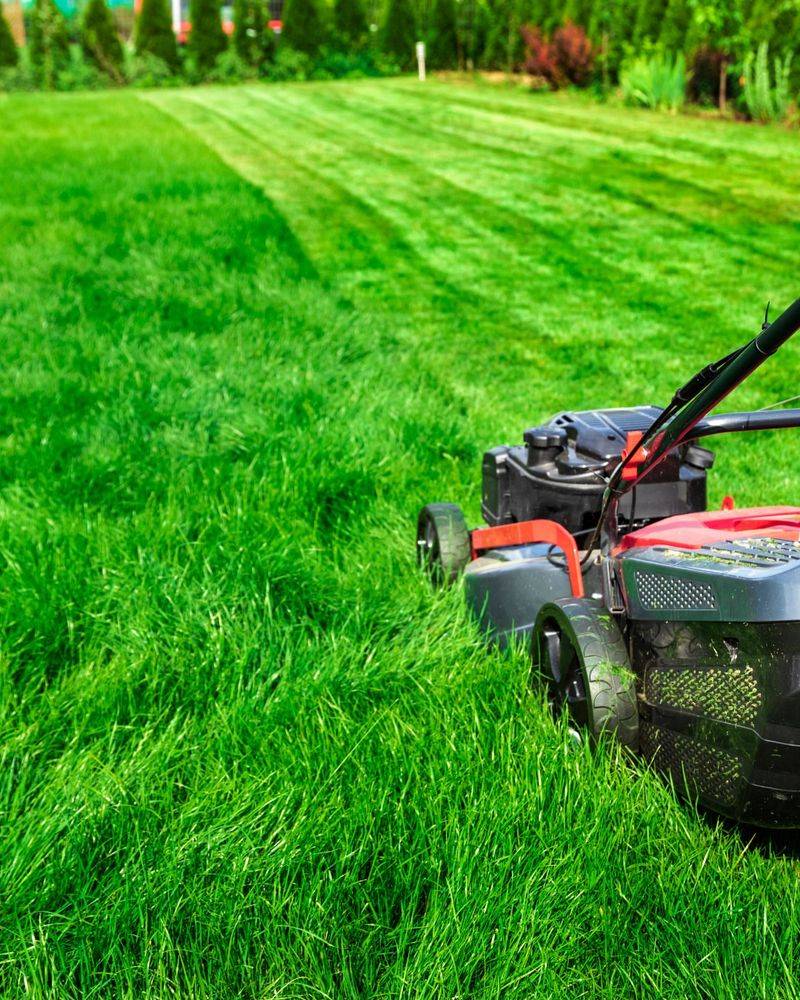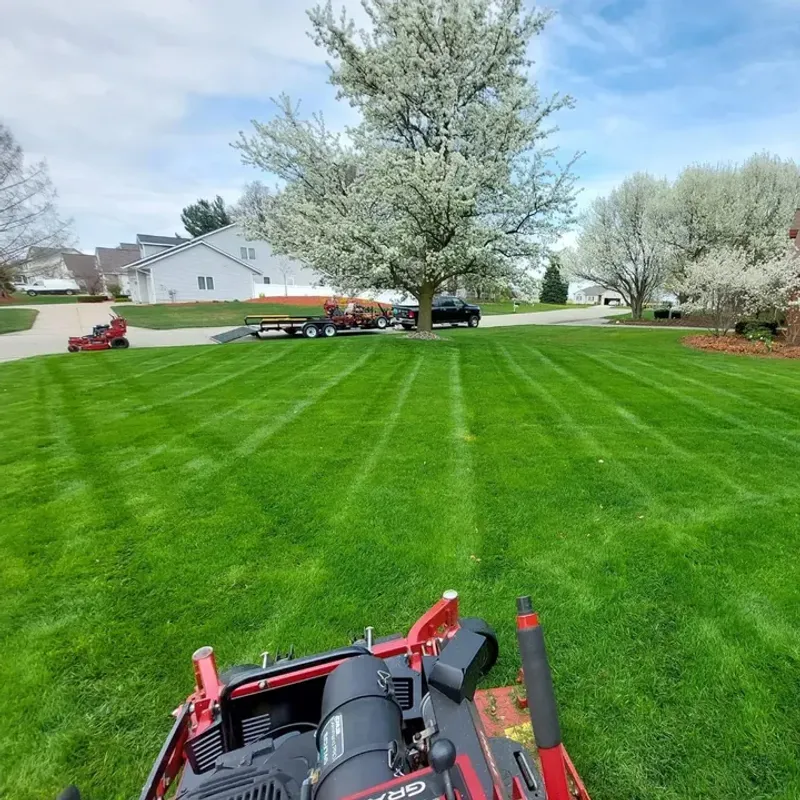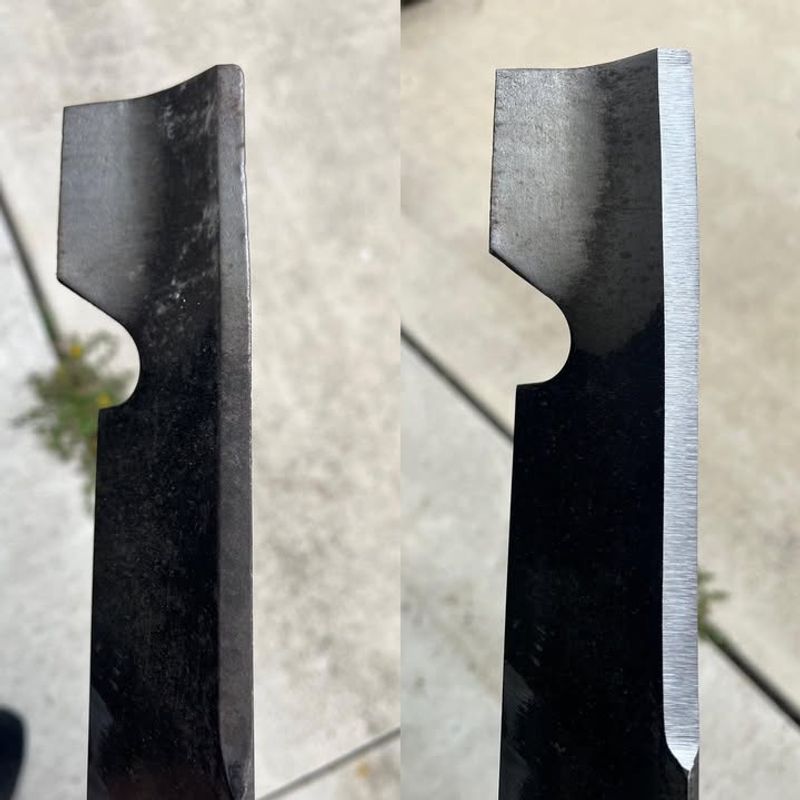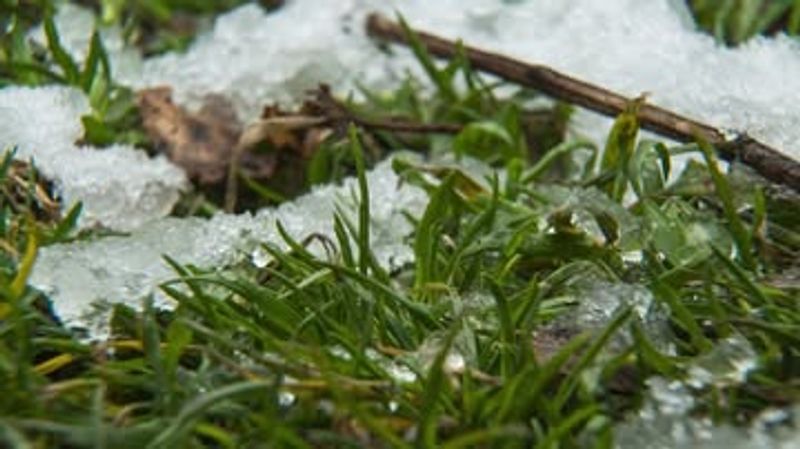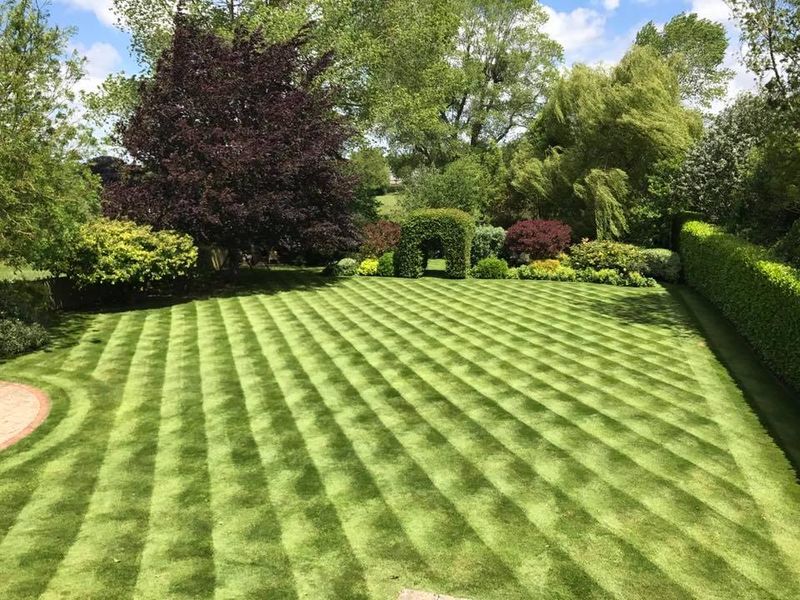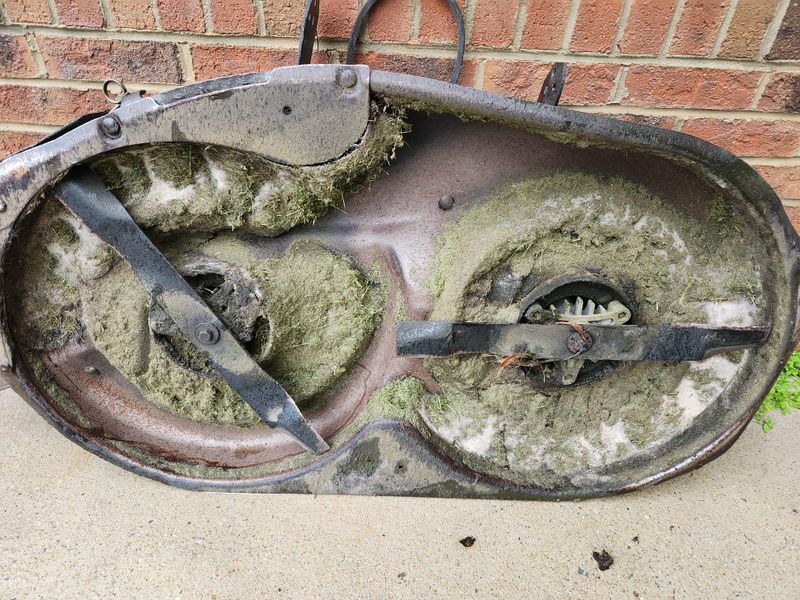As fall winds down in Virginia, your lawn isn’t quite ready for winter just yet. November is a transition month, when grass growth slows — but doesn’t stop.
The way you mow now can determine whether your lawn wakes up lush and healthy in spring or struggles with bare spots and disease. To finish the season strong, here are 7 smart mowing tips for November.
1. Adjust Your Mower Height For Fall Conditions
Cool-season grasses in Virginia need a different cutting height as November arrives. Raise your mower blade to about three inches to help the grass develop stronger root systems before winter dormancy sets in.
Taller grass blades capture more sunlight, which helps your lawn store energy for the cold months ahead. A higher cut also provides better insulation against frost damage and reduces stress on your turf during temperature fluctuations that Virginia often experiences in late fall.
2. Keep Mowing Until Growth Actually Stops
Many homeowners put their mowers away too early, but Virginia grass often keeps growing well into November. Watch your lawn carefully and continue mowing whenever the grass reaches about four inches tall.
Temperature drops trigger slower growth, but mild fall days can surprise you with continued green growth. Your lawn will tell you when it’s ready to rest. Until then, regular mowing prevents the grass from getting too long and matting down under winter snow or ice, which can cause disease problems come spring.
3. Mulch Those Fallen Leaves While You Mow
Virginia’s beautiful autumn foliage eventually lands on your lawn, creating a perfect opportunity for natural fertilization. Instead of raking and bagging, simply mow over the leaves to chop them into tiny pieces that decompose quickly.
Leaf mulch adds valuable nutrients back into the soil as it breaks down over winter. Just make sure the leaf layer isn’t too thick before mulching—you should still see grass blades peeking through. Multiple passes with your mower work best for heavy leaf coverage.
4. Sharpen Your Mower Blade Before Final Cuts
Dull blades tear grass instead of cutting cleanly, leaving ragged edges that turn brown and invite disease. Before November mowing sessions, check your blade’s sharpness and either sharpen it yourself or take it to a professional.
Sharp cuts heal faster and help grass enter winter dormancy in the healthiest condition possible. You’ll notice the difference immediately—freshly cut grass looks crisp and green rather than brownish and tattered. A sharp blade also requires less engine power, saving fuel and reducing wear on your equipment.
5. Avoid Mowing Wet Or Frosty Grass
November mornings in Virginia often bring heavy dew or frost that makes grass slippery and vulnerable. Wait until the sun dries off moisture before starting your mower to prevent clumping and uneven cuts.
Wet grass clogs mower decks and creates messy clumps that smother the lawn underneath. Frosty grass is even worse—mowing frozen blades can damage cell structures and leave your turf brown and stressed. Patience pays off with a cleaner cut and healthier grass that recovers quickly from mowing.
6. Change Your Mowing Pattern Each Time
Grass develops memory and starts leaning in the direction you typically mow, creating ruts and an uneven appearance over time. Switching up your pattern—north to south one week, east to west the next—keeps grass growing upright and healthy.
Varying your route also prevents soil compaction in the same tire tracks every time. Your lawn will look more professional and uniform when grass stands tall rather than leaning. Plus, changing patterns makes mowing more interesting and helps you notice areas that might need extra attention or repair.
7. Clean Your Mower Deck After Each Use
Grass clippings, moisture, and debris build up underneath your mower deck, creating a perfect environment for rust and reducing cutting efficiency. After November mowing sessions, scrape away buildup with a putty knife or stiff brush.
A clean deck allows better airflow, which improves mulching performance and prevents clumps from dropping onto your Virginia lawn. Taking five minutes for this simple maintenance extends your mower’s lifespan significantly. Before storing your equipment for winter, give it a thorough cleaning to prevent corrosion during the cold, damp months ahead.


